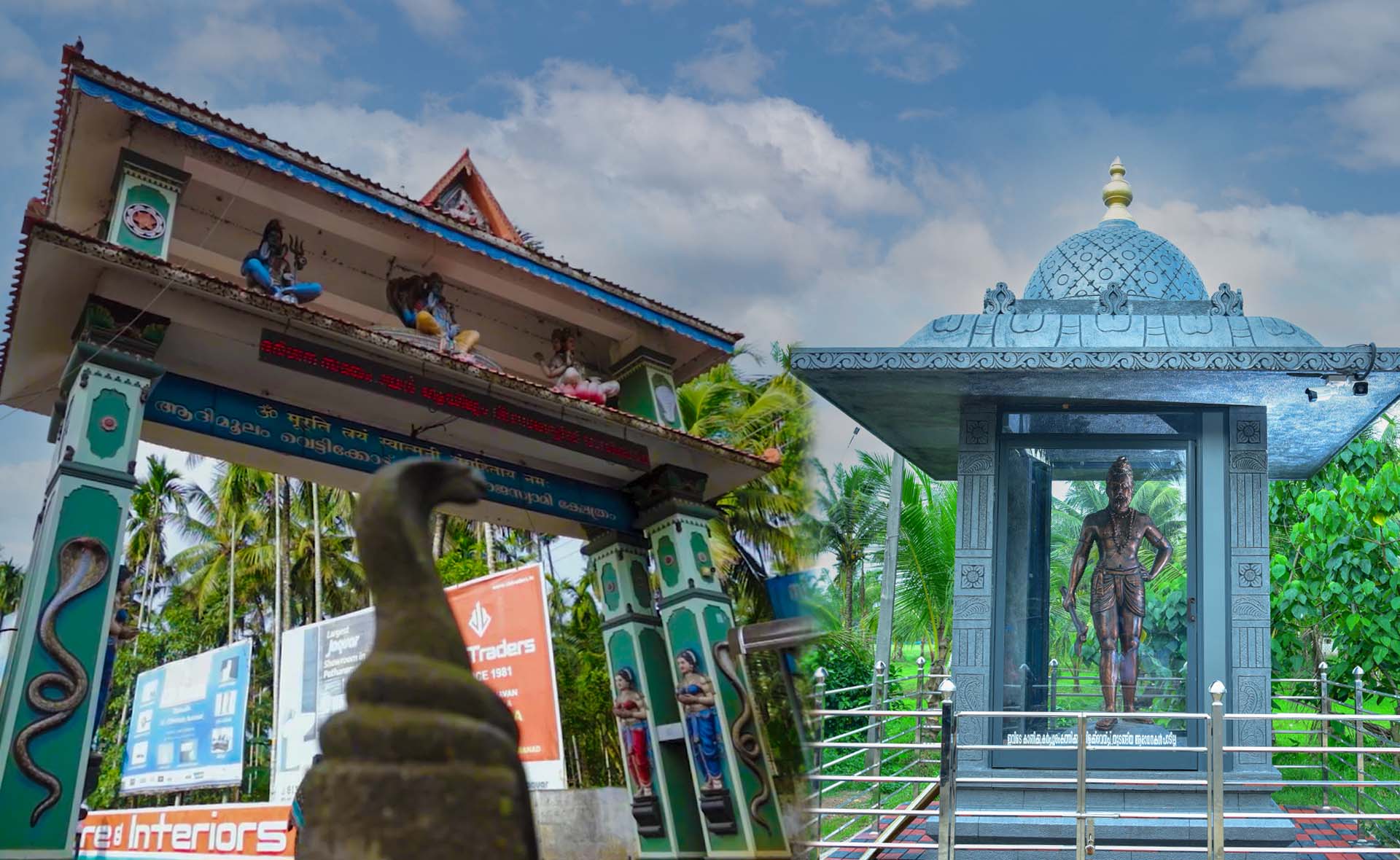Legend
Among the eight Nagarajas who were born to Kasyapa Prajapati and his wife Kadru, there is only one temple on the Kerala coast where the eldest and most holy of them, Lord Ananta is worshiped in His unique form. That holy abode is Vetticode Sri Nagarajaswamy Temple. There is a legend that mentions the supreme importance of Naga worship here. Sri Parasuraman, an incarnation of Vishnu, threw his battle-axe into the sea, created Kerala, and settled in the Brahmins. But in the beginning, human life here became difficult with the abundance of snakes and salinity. Seeing this grave situation, a grieved Parasuraman sought the help of Sri Parameswara who told him that Lord Anantha could really solve the problem. So Parasurama went to Gandhamadana mountain and did a penance to please Anantha Bhagavan and expressed his grief. The benevolent Anantha Bhagavan sent his attendant 'Serpent Gods' and their exhaled air changed the salinity of the waters and controlled the den (group of snakes). In memory of this, Sri Parasurama had an idol made by the asura sculptor Maya and himself invoking Ananta Bhagawan and consecrating it in Vetticode. This auspicious Lord Shiva appeared and received the Dakshina and Brahma auspiciously fixed the Muhurtam. Thus, Vetticode Nagaraja became the unified energy of triumvirates - Brahma, Vishnu, and Maheshwara.
The line "Adimoolam Vettikottu" that we hear in the Pulluvanpattu (songs dedicated to serpent deities), is based on this legend. The etymology of the word "Vettikottu" points to the legend of Sriparasurama piled up the soil with an axe and performed Nagaraja Pratishtha on it. Vettikot is where Nagadhiraja Pratishtha (consecration of serpent worship) was held for the first time in the world, so the title 'Adimoolam Vetticode' is rightly deserved for this holy abode.
Temple Traditions and Rituals
The rituals of this temple are almost different from other temples. Abhishekam, Nivedya Samarpanam, and Pooja are performed in the early morning of every day. There is a rule that the morning pujas should be completed in Brahma Muhurt itself. Then Ucha Pooja also takes place before midday. On Sundays, a large number of devotees come from distant places to offer their prayers, so the time of Ucha Puja is extended for their convenience. On that day, the temple is closed only afternoon. In the evenings, there is only the ritual lighting of the lamp and no poojas especially.


